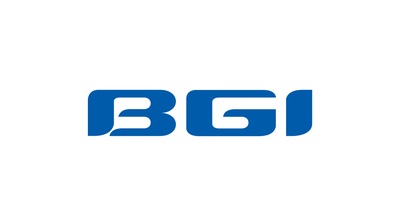Press Release
"Anti-Choke Mug" – Chula Innovation for Neuro Patients to Drink Water Confidently

[ad_1]
BANGKOK, Nov. 29, 2023 /PRNewswire/ — Chula Medicine has designed an anti-choke mug with calculated angle, amount, and time of water flow from the mug to the patient’s lips hoping to reduce choking that may lead to lung infection, bring peace of mind to caregivers, and make it safer for patients who will have a better quality of life.

Choking is a potentially life-threatening problem, especially when it comes to older adults suffering from neurological diseases such as Parkinson’s, and Alzheimer’s diseases, etc. Choking in these patients can cause pneumonia, lung infections, sepsis, and eventually death, so it should not be overlooked by patients and caregivers.
“When patients with difficulty swallowing and are prone to choking come to see the doctor, the doctor would advise them to eat slowly, drink slowly, bend their neck, then swallow mindfully and practice their neck muscles regularly. This is easier said than done, as less than half of the patients can do this because we often eat and drink the way we’re used to, so much so that we run the risk of choking,” reflected Professor Roongroj Bhidayasiri, M.D., a neurology specialist, and head of the Excellence Center for Parkinson’s Disease & Related Disorders, King Chulalongkorn Memorial Hospital, Thai Red Cross Society.
“Since it is difficult for the elderly to modify their habits, we find other ways to help by studying normal drinking behavior. The act of lifting our neck when the water touches our lips is used as a basis for the development of the remarkable “anti-choke mug.”
Choking – a dangerous symptom that should not be overlooked
People of any age can “choke” on their water and food, but this happens from time to time and is usually not very dangerous (if the symptoms are cured and help arrives in time). The choking that is worrisome and we should pay special attention to is the choking that occurs in the elderly who have weak neck muscles, and neurological patients whose muscles do not work properly, such as Parkinson’s patients and those with dysphagia (1 in 3 older adults, and half of brain patients have dysphagia).
“Some elderly people have difficulty swallowing and are at so high risk of choking that the doctor is at the point of prescribing placement of feeding tube through the nose or the abdomen, but most Thai families are afraid of doing so and the argument is often about pitying the elderly. Yet, this pity brings a very high risk,” Prof. Dr. Roongroj explains.
“One of the problems for the elderly is incomplete swallowing, and there is some food residue remaining in the oral cavity. For example, a morsel of food normally contains both rice and some other food, which the elderly or patients may not be able to swallow completely at once. Doctors usually advise the caregiver to tell the patient to swallow again for the second and third times to completely swallow the food. Moreover, the caregiver must also check in the patient’s mouth every time to see if there is any remaining food that may cause the patient to choke later.”
Delay aspiration may occur only a few minutes after swallowing, but it is also possible after an hour of eating.
Prof. Dr. Roongroj further illustrates, “It may seem like all the food has been swallowed, but in fact, there is still some food left in the mouth. When the patient lies on his/her back, the food bits could be dislodged, causing coughing and choking.”
Another type of choking is silence aspiration which refers to asymptomatic choking. There are no coughing or other symptoms, but small food particles or the patient’s saliva which has bacteria have already flowed into the windpipe (trachea), causing lung infection, or pneumonia. Patients will appear abnormal only when severe symptoms of lung infection manifest, such as cough, fever, difficulty breathing, and chest congestion leading to hospitalization.
How to Swallow Without Choking – Recommendations for Patients and Caregivers
Prof. Dr. Roongroj said that the care of patients with choking symptoms and dysphagia is a delicate matter. The caregivers must be calm and extra attentive in the following areas:
1. Ask the patient to move the mouth and neck muscles regularly to strengthen them, for example, exercise the neck muscles by slowly bowing, tilting the head backward, and side to side, while holding in each position for 5 seconds, repeating 5 times; exercise mouth and lips muscles by pronouncing a: (aa), u: (oo), i: (ee), oʊ (o), ɪa (ai) sounds while holding each sound for 5 seconds, repeating 5 times, etc.
2. Ensure that the patient is mindful of eating and drinking water, concentrating on eating and swallowing all the food. While eating and drinking, the patient should not talk, watch TV, or engage in other activities that distract them, and will reduce the effectiveness of swallowing, posing a risk of choking.
3. Instruct the patient to bend his/her head while swallowing (chin tuck maneuver). Once the food is in the mouth, chew it thoroughly. When swallowing, tuck in the chin close to the chest before swallowing to reduce the chance of choking.
4. Closely observe the patient’s eating behavior. If the patient shows signs of forgetting the advice, the caretaker should help guide the patient’s head at the right time so that the chin is tucked before telling them to swallow food.
Prof. Dr. Roongroj said that patients and caregivers receive such advice and practice from a swallowing trainer at the hospital, but oftentimes, when patients return home, their swallowing behavior goes back to their old ways.
“Most patients can only practice swallowing with a trainer at the hospital, and when they go home, they don’t adjust their eating habits according to the doctor’s instructions. Few patients can do this. In addition, some of the underlying diseases are obstacles, such as Parkinson’s disease, and those with strokes, muscle weakness, and arteriosclerosis that make swallowing more difficult.”
Anti-choke mugs – help ease swallowing, reducing the chance of choking
As behavioral changes for swallowing is difficult for both patients and caregivers, the research team then developed an “anti-choke mug” to help patients drink water safely.
“We designed an anti-choke mug so that users can drink and swallow water while the esophagus is in a good position, and the trachea is closed to reduce the risk of choking.”
Prof. Dr. Roongroj said the anti-choke mug is made with the same type of material as baby bottles, designed to look like a regular drinking mug with bright colors to stimulate users to want to drink more water.
“We don’t want users and people around them to feel that the person using this mug is a sick person in need of a medical device, so we designed the anti-choke mugs to blend in with everyday items that can be used anywhere,” Prof. Dr. Roongroj explained the concept design of the “anti-choke mugs.”
Though externally not different from regular mugs, the interior has a special mechanism to prevent choking that the research team has studied and calculated thoroughly — whether it is the angle and amount of water flow, and the appropriate duration for the water to flow from the mug to the user’s lips.
Prof. Dr. Roongroj explains the special features of the anti-choke mug, “This mug allows the elderly to drink without tilting their neck backward. And in so doing the chance of choking is drastically reduced. Most importantly, this anti-choke mug can ensure the appropriate amount of water per drink, and duration of drinking to make slow enough, and with the right volume, the right angle, the right drinking posture, and the right duration. These are things that will help reduce choking in the elderly and patients.” In addition, the anti-choke mug has a special design to help Parkinson’s patients.
“The handle of the mug is designed to have a bulging part at the bottom to help Parkinson’s patients who cannot grip properly, so that they can have a strong and stable grip, thus becoming more confident in drinking water.”
Prof. Dr. Roongroj further advised Parkinson’s patients with spasms and tremors that they should take their Parkinson’s medications before having their meals, drinking water, or doing various activities because when the medication starts working, the patient will have fewer tremors, move their body close to normal, and have reduced a chance of choking.
Real-world test of “anti-choke mugs” before production
Currently, the anti-choke mug is still a prototype that has past the preliminary research stage and is being tested with a large number of real users who are in-patients and outpatients who use the mugs in their daily lives. These mugs are fitted with sensors to monitor water drinking behavior.
“We want to know to what extent can drinking water from this mug in patients’ daily life without supervision from the doctor or nurse, can reduce choking. The results are all assessed from real usage data to make the design most compatible with everyday use, and then continue to expand production at the industrial level.”
In addition to the functional improvement, in this test phase, the research team will also address some of the limitations, especially regarding cleaning. Since the mug is designed in a single piece with an internal water barrier with a calculated sloping angle for an appropriate amount of water flow, it may be difficult to clean these nooks and crannies.
“Ultimately, the research team hopes that the “anti-choke mug” that we intentionally designed and developed will enable users to happily eat three meals a day, drink water with confidence, and not worry about choking,” Prof. Dr. Roongroj concluded.
Those who want to be part of the anti-choke mug research can contact Prof. Dr. Roongroj Bhidayasiri, the Excellence Center for Parkinson’s Disease & Related Disorders, King Chulalongkorn Memorial Hospital, Thai Red Cross Society, Sor Thor Building, 7th Floor, Tel. 0-2256-4000 ext. 70702-3, Fax. 02-256-4000 ext. 70704, Mobile: +668-1107-9999, Email: [email protected], Website: www.chulapd.org.
For the full release and more images, please visit: https://www.chula.ac.th/en/highlight/141762/
About Chulalongkorn University
Chulalongkorn University has made the world’s top 50 university list for employment outcomes, which reflects both the high employment rate and work ability of Chula graduates. The university is also listed as the best in Thailand for the 15th Consecutive Year (since 2009), according to the newly released QS World University Rankings 2024, putting Chula at 211th in the world, up from 244th last year.
Social Media:
Facebook: https://www.facebook.com/ChulalongkornUniversity
Youtube: https://www.youtube.com/chulauniversity
Linkedin: https://www.linkedin.com/school/15101896/
Photo – https://mma.prnewswire.com/media/2286741/2023_09_07_Anti_choke_mug.jpg
![]() View original content:https://www.prnewswire.co.uk/news-releases/anti-choke-mug–chula-innovation-for-neuro-patients-to-drink-water-confidently-301999124.html
View original content:https://www.prnewswire.co.uk/news-releases/anti-choke-mug–chula-innovation-for-neuro-patients-to-drink-water-confidently-301999124.html

[ad_2]
Source link
Press Release
New Study Reveals Majority of Indians Prioritize Nutrition Over Taste, Surpassing Global Average

[ad_1]
Based on a recent survey of urban Indian consumers:
-
Nine out of 10 consumers are searching for protein-rich food compared to seven out of 10 global shoppers. -
The top four qualities consumers look for when buying snacks are (1) natural, (2) heart-healthy, (3) protein-rich and (4) energy-source, all of which come before satisfying cravings. -
Nuts have emerged as one of the most popular snacking choices, with 86% of Indian shoppers report having purchased them in a span of 6 months. -
Urban Indians read nutrition labels more than the global average, reflecting a growing trend towards informed purchasing. -
69% of urban dwellers surveyed have the opinion that plant-based protein is just as good as meat-based protein, exceeding the global average of 55%.
Wonderful Pistachios, the world’s largest grower and processor of pistachios and distributor of California Pistachios in India, released today, World Nutrition Day, the findings of a new global study that sheds light on the snacking habits of urban Indians. The study, commissioned with Material, a leading global research consultancy, included 10 countries and over 12,400 respondents, revealed a new behavioural trend that urban Indian consumers prioritize nutrition over taste when it comes to snacking. This growing preference for healthy snacking emphasizes the importance of good nutrition for overall well-being.
For the India market specifically, the study delved into the snacking habits of 2,415 shoppers across six Indian cities, which represented a population of approximately 35.9 million consumers. Remarkably, a majority of urban Indians (58%) reported basing their food purchasing decisions on nutritional benefits more than taste, exceeding the global average of 52%. Delhi and Ahmedabad lead with over 60% of urban shoppers preferring nutrition in their food. Bengaluru and Chennai follow closely, indicating a nationwide shift towards smarter snacking preferences. In India, Millennials and Gen Z are leading the charge in health-conscious purchasing decisions, with more than 83% of consumers in these age groups reading nutritional labels before buying.
Indian consumers prioritize four key factors when shopping for nutritional snacks: natural (free of artificial colours and preservatives), heart-healthy, protein-rich, and provides energy. Nine out of 10 urban shoppers consciously seek protein-rich food options, compared to the global average of seven out of 10. The focus on nutrition has fueled the rise of nuts as a preferred snack choice, becoming essential to daily eating habits. The study found a staggering consumption of nuts, with 86% of Indian shoppers report purchasing them in a span of 6 months, compared to just 75% globally. With 6g of protein in per 28g serving, California Pistachios are a smart snack choice that provides benefits without sacrificing taste.
Shail Pancholi, Country Director, India, Wonderful Pistachios, commented on the study, saying, “Nuts were traditionally used as garnishes and consumed during festivals, but have now become a popular snack in India, indicating a notable shift in dietary habits. Pistachio consumption in India has doubled in the last six years, as consumer awareness of the nutritional benefits that pistachios offer has grown. Consumers are discovering that pistachios are naturally cholesterol-free, rich in plant-based protein and dietary fiber, and provide over 30 different vitamins and minerals.”
Interestingly, the study found that nuts are the second most preferred snack among urban Indian consumers, with 64% of Baby Boomers and 59% of Gen Z prioritizing nutrition over taste when selecting food. This indicates a growing focus on health across generations, with Baby Boomers focusing on senior wellness and Gen Z reflecting the rise of mindful purchasing. Though on opposite ends of the age spectrum, these two generations take the lead in seeking protein-rich options, as well as preferring natural snacks.
Mumbai tops most of the consideration sets when choosing a snack. Residents opt for natural ingredients (35% vs. the national average of 30%), heart-healthy options (33% vs. 30%), and protein (33% vs. 29%). Chennai residents look for energy-boosting snacks (31% vs. the national average of 29%).
The fact that 69% of urban Indians surveyed have the opinion that that plant-based protein is just as good as meat-based protein reflects a positive shift towards varied dietary preferences. Pistachios are a good source of high-quality complete protein, containing all nine essential amino acids. A 28g serving of pistachios provides 6g of protein, which is 11% of the recommended daily allowance (RDA) according to FSSAI.
The Wonderful Pistachios study unveils a compelling shift in Indian snacking habits. Nuts are evolving from festive treats to a daily snacking staple, fueled by a nationwide preference for more nutritious options. The trend transcends generations, resonating with Gen Z and Baby Boomers alike, underscoring the growing importance of mindful eating in urban India. As consumers increasingly seek natural, heart-healthy, protein-rich, and energy-boosting snacks, the future of Indian snacking appears to be firmly rooted in nutrition and well-being.
Wonderful Pistachios
Wonderful® Pistachios is the world’s largest grower and processor of pistachios, with a global presence in over 70 countries. As a vertically integrated operation, they are experts in every step of the process from tree to shelf, ensuring the highest-quality product every time. In tandem with its Grower Partners, Wonderful Pistachios harvests 125,000 sunny acres (50,000 hectares) of land in California that receive warm days and cool nights, which work in harmony with the rich, natural soils to create the perfect growing climate for high-quality pistachios. They ship 600 million pounds (204 million kg) of nuts worldwide from their advanced processing facilities to ensure the highest standards are met. When it comes to pistachios, Wonderful® Pistachios expertise is unmatched in scale and capacity, paired with warehouses and sales teams worldwide that are well-equipped to provide support at every step of the way.
California Pistachios
California Pistachios are grown and distributed by The Wonderful Company, the world’s largest vertically integrated pistachio processor and marketer located in California’s Central Valley. California Pistachios are Non-GMO, providing a smart, healthy choice for consumers around the world. Sun-ripened in the moderate Mediterranean climate of California, these distinctively green nuts pack taste and contain antioxidants and over 30 different nutrients. California Pistachios in India are available under leading brands and private labels at retail outlets, grocery stores, and online platforms.
For more information about California Pistachios India, please visit www.b2b.wonderfulpistachios.com
[ad_2]
Source link
Press Release
Singapore Prepares Ahead to Leverage Artificial Intelligence for a Better Future

[ad_1]
SINGAPORE, May 31, 2024 /PRNewswire/ — Senior Minister of State for Communications and Information Tan Kiat How launched the Digital Enterprise Blueprint (DEB) at Asia Tech x Singapore (ATxSG) 2024 today. The Blueprint will enable SMEs to harness technology, optimise the way they work, and strengthen digital resilience and cybersecurity across the ecosystem. 50,000 SMEs are expected to benefit over the next five years through four key focus areas:
- Empower enterprises to be smarter by adopting AI-enabled solutions
- Enable enterprises to scale faster through cloud-based and integrated solutions
- Equip enterprises to be safer through improved cyber resilience
- Support enterprises to upskill workers to make full use of digital capabilities
Seven partners have come onboard to pledge their commitment, including Singapore Business Federation, Singapore Computer Society, SGTech, Amazon Web Services, Google, Microsoft and Salesforce.
In collaboration with IMDA and the TechSkills Accelerator for ITE and Polytechnics Alliance, SGTech is launching the Tech Apprenticeship Programme to expand the career pathways of graduates by providing access to industry apprenticeships that offer on-the-job training and development opportunities. Over the next two and a half years, SGTech aims to facilitate the placement of at least 300 apprentices who are fresh or mid-career professionals from polytechnic or ITE backgrounds, and drive the adoption of similar practices that promote more inclusive hiring and career agility.
IMDA and the Singapore Academy of Law (SAL) signed an MoU aimed at uplifting the legal sector’s productivity through the use of GenAI. As part of this partnership, GPT-Legal, a new large language model which is contextualised for Singapore’s legal sector, will be co-developed. The model will be integrated into SAL’s research platform LawNet, which is accessible by 75% of Singapore’s lawyers. SAL will also be penning an MoU with the National University of Singapore and AI Singapore to develop its AI capabilities and create a certification to recognise AI specialists in the legal profession.
Additionally, Tribe and Digital Industry Singapore announced a collaboration with NVIDIA to launch the Ignition AI Accelerator for AI startups to create and bring to market the next wave of advancement in AI solutions. This programme will nurture 15 high-potential startups, equipping them with well-rounded support covering business and technical needs. NVIDIA and Tribe will also collaborate with EnterpriseSG to offer qualified AI startups funding support through the Startup SG Tech scheme, and assist them through the IMDA Accreditation process.
Singapore hosted the final meeting of the UN Secretary-General’s Artificial Intelligence Advisory Body (AIAB) from 28-29 May. As part of the agenda, Singapore facilitated an engagement session between AIAB and the Digital Forum of Small States (Digital FOSS). Digital FOSS Fellows exchanged views with AIAB members on the topic of AI governance, particularly on the implications and challenges faced by small states. Through such efforts, Singapore aims to promote a more inclusive approach towards shaping global AI and digital governance.
Contact:
[email protected]
![]() View original content to download multimedia:https://www.prnewswire.com/in/news-releases/singapore-prepares-ahead-to-leverage-artificial-intelligence-for-a-better-future-302160193.html
View original content to download multimedia:https://www.prnewswire.com/in/news-releases/singapore-prepares-ahead-to-leverage-artificial-intelligence-for-a-better-future-302160193.html

[ad_2]
Source link
Press Release
One in Six Globally Concerned About Colorectal Cancer Screening Costs

[ad_1]
SHENZHEN, China, May 31, 2024 /PRNewswire/ — By 2040, the burden of colorectal cancer (CRC) is projected to increase to 3.2 million new cases and 1.6 million deaths per year representing a 66% and 71% rise in new cases and deaths respectively relative to 2020.

To better address the global burden of CRC and reduce its impact, BGI Genomics has launched the second edition of its global CRC awareness report, covering 1,938 respondents from Brazil (306), China (367), Poland (300), Saudi Arabia (300), Thailand (362), and Uruguay (303):
CRC Screening Gaps Vary Globally: Nearly half (49.3%) of global respondents have never undergone CRC screening, with the highest proportions in Saudi Arabia (62.0%) and Poland (61.0%).
Preference for Fecal Testing Over Colonoscopy: Although colonoscopies are more recognized (33.4%), fecal tests at healthcare facilities are preferred (31.8%), reflecting a trend towards non-invasive methods.
Cost and Fear are Determinants of Screening Choice: Fear of colonoscopy (18.2%) and screening costs (17.7%) are major barriers to CRC screening. Poland (24.7%) and Uruguay (21.0%) show the highest fear of colonoscopy, while Thailand (24.5%) and Brazil (20%) indicate the most concern about costs.
Medical Advice and Family History Drive CRC Screening: Doctor’s recommendations are a major driver for CRC screening (30.5% globally), with Uruguay showing the highest adherence (44.1%). Additionally, those with a family history of CRC are more proactive in screening (64.5%), compared to the general population (35.0%).
Prof. Varut Lohsiriwat from Mahidol University offers his insights to this report. He suggested: “The essence of effective cancer screening lies in the acceptance and adherence of the patient to the screening method. The best screening method is the one that the patient accepts and adheres to because that’s the method that will actually benefit them.”
Dr. Zhu Shida, BGI Genomics Deputy GM, notes: “At BGI Genomics, we focused our efforts on developing advanced molecular biology testing techniques to close the gap [between acceptance and accessibility]. The ultimate goal is to transform colorectal cancer from a life-threatening disease into a manageable condition through widespread, early screening and intervention.”
For more region-level comparisons, access the full BGI Genomics 2024 State of CRC Awareness Report.
All data involved in this report come from the results of an online survey project conducted by BGI Genomics. It only surveys awareness related to colorectal cancer and does not involve personally identifiable data.
Logo – https://mma.prnewswire.com/media/1608027/BGI_Logo.jpg
![]() View original content:https://www.prnewswire.co.uk/news-releases/one-in-six-globally-concerned-about-colorectal-cancer-screening-costs-302159170.html
View original content:https://www.prnewswire.co.uk/news-releases/one-in-six-globally-concerned-about-colorectal-cancer-screening-costs-302159170.html

[ad_2]
Source link

 Fashion8 years ago
Fashion8 years agoThese ’90s fashion trends are making a comeback in 2017

 Entertainment8 years ago
Entertainment8 years agoThe final 6 ‘Game of Thrones’ episodes might feel like a full season

 Fashion8 years ago
Fashion8 years agoAccording to Dior Couture, this taboo fashion accessory is back

 Entertainment8 years ago
Entertainment8 years agoThe old and New Edition cast comes together to perform

 Sports8 years ago
Sports8 years agoPhillies’ Aaron Altherr makes mind-boggling barehanded play

 Press Release8 years ago
Press Release8 years agoUber and Lyft are finally available in all of New York State

 Sports8 years ago
Sports8 years agoSteph Curry finally got the contract he deserves from the Warriors

 Entertainment8 years ago
Entertainment8 years agoDisney’s live-action Aladdin finally finds its stars





